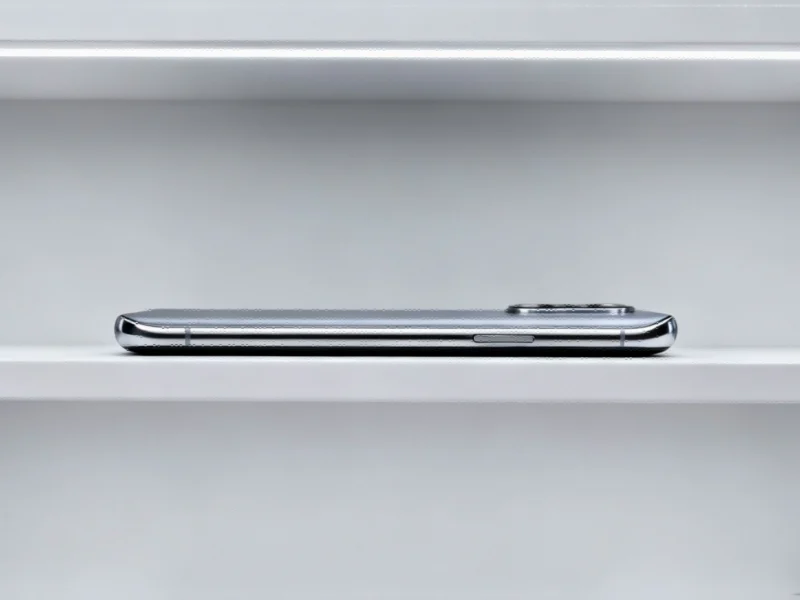When Nvidia, a $2 trillion chip behemoth that typically deals in data center-scale AI systems and gaming GPUs, partners with a startup known for repairable laptops, something significant is brewing. The Framework and Nvidia collaboration on modular laptops isn’t just another product announcement—it’s a potential industry inflection point that could reshape how we think about personal computing longevity. As someone who’s covered the PC industry through multiple architectural shifts, from the rise of integrated graphics to the smartphone revolution, this partnership feels different. It suggests that even the giants are recognizing that the disposable tech model has reached its limits.
Table of Contents
The Modular Momentum Builds
According to recent reports, Framework’s modular laptop design now encompasses nearly every component, from IO ports and displays to storage, memory, and even the CPU. The Nvidia collaboration takes this a step further by introducing a modular GPU to the Framework Laptop 16, leaving only the power supply circuit as the remaining non-modular component. What’s particularly notable here is how quickly Framework has progressed from a niche concept to attracting major industry players.
This isn’t happening in isolation. Intel reportedly debuted its own modular design concept for laptops and mini-PCs earlier, suggesting the industry’s biggest players are all sniffing around the same paradigm shift. The timing is telling—we’re at a point where processor performance gains have slowed, making incremental upgrades more appealing than full system replacements. Meanwhile, the environmental impact of electronic waste has become impossible to ignore, with millions of laptops discarded annually despite containing perfectly functional components.
Why Nvidia’s Bet Matters
Nvidia’s involvement is particularly significant because the company has traditionally benefited from the upgrade cycle model. Gamers and creators buying new laptops every 2-3 years to access better graphics performance has been reliable revenue. Their participation suggests they see more long-term value in modular ecosystems than in maintaining the status quo. This aligns with Nvidia’s forward-thinking reputation—they’re not just reacting to market trends but potentially shaping the next computing paradigm.
The implications extend beyond consumer laptops. If modular standards take hold, we could see similar approaches in workstation and even data center environments where GPU upgrades are frequent and costly. Nvidia’s experience with enterprise customers likely informs their thinking here—they understand the pain points of organizations that need to maintain mixed fleets of computing equipment across multiple upgrade cycles.
The Desktop Parallel That Gives Hope
Looking at the desktop PC market provides both encouragement and caution. The standardization around ATX, mini-ATX, and ITX motherboard form factors created an ecosystem where components from different manufacturers could work together, fueling decades of innovation and competition. However, as anyone who’s built a PC knows, even within these standards there are compatibility headaches, proprietary implementations, and occasional dead ends.
Laptops present a much tougher standardization challenge. The tight thermal envelopes, varying form factors, and power constraints of mobile devices make universal standards difficult. A 16-inch ultrabook has completely different engineering requirements than a 16-inch gaming laptop, despite similar screen sizes. This is where Nvidia’s engineering expertise could prove invaluable—they understand how to balance performance, thermals, and power efficiency in constrained environments.
The Business Case Beyond Enthusiasts
While Framework initially appealed to the DIY and right-to-repair communities, the real growth potential lies in enterprise and education markets. Businesses that maintain large laptop fleets could dramatically reduce total cost of ownership by upgrading components rather than replacing entire systems. Educational institutions, which often stretch hardware budgets to the breaking point, could extend laptop lifecycles significantly.
Various brands already offer some degree of user repairability in business-focused laptops, but Framework’s approach takes this to another level. The ability to standardize on a chassis while customizing components for different user roles—developers needing more RAM, designers requiring better GPUs, executives prioritizing battery life—could revolutionize how organizations approach hardware procurement.
The Roadblocks Remain Substantial
Despite the promising developments, modular laptops face significant hurdles. Cost remains the primary challenge—manufacturing interchangeable components with reliable connectors and standardized interfaces inevitably costs more than integrated designs. There’s also the ecosystem problem: Framework parts only work with Framework laptops, creating vendor lock-in that somewhat undermines the modular ideal.
The thermal management challenge cannot be overstated either. High-performance components generate substantial heat, and designing cooling systems that can accommodate various CPU and GPU combinations without compromising reliability or noise levels requires sophisticated engineering. This is where having chipmakers like Nvidia and Intel directly involved could make the difference between a niche product and mainstream adoption.
The Sustainability Imperative
Beyond the technical and business considerations, the environmental argument for modular laptops grows stronger by the year. With electronic waste becoming a global crisis and consumers increasingly conscious of their environmental footprint, the ability to extend a laptop’s lifecycle through upgrades rather than replacement addresses genuine concerns. The modular approach could potentially reduce e-waste by keeping functional components in use longer while allowing users to upgrade only what they need.
This aligns with broader right-to-repair movements gaining traction worldwide. Legislation supporting repair rights is emerging in both the US and EU, creating regulatory pressure that favors modular designs. Companies that embrace this trend early may find themselves better positioned as environmental regulations tighten.
What Comes Next
The success of the Framework and Nvidia collaboration could trigger a domino effect across the industry. If other major manufacturers see market traction, we might see competing modular ecosystems emerge, potentially leading to the kind of standardization wars that characterized early computing history. The ideal outcome would be industry-wide standards that allow cross-compatibility, but history suggests we’re more likely to see competing proprietary systems initially.
For consumers, the benefits are clear: longer-lasting devices, customization options, and reduced environmental impact. For the industry, it represents both disruption and opportunity. Traditional laptop manufacturers would need to rethink their business models, while component makers could see new revenue streams from upgrade cycles rather than full system replacements.
As the modular laptop concept gains momentum, the Framework and Nvidia partnership serves as a bellwether. It demonstrates that the concept has moved beyond niche appeal to attracting serious industry investment. Whether this becomes the next computing standard or remains a premium alternative depends on how quickly costs can be reduced, ecosystems can mature, and consumers can be educated about the benefits. One thing seems certain: the era of completely disposable laptops may finally be coming to an end.



